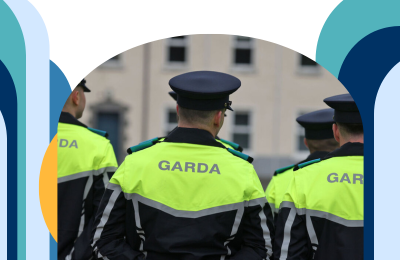A day in the life of an SNA
Being an SNA is a dynamic job, and no two days are the same. Although it is a demanding role to be in, it is also extremely rewarding. All SNAs agree that the satisfaction that they get from the job is worth the difficult days in school.
Special Needs Assistants play a vital role in aiding students with supplementary educational needs even if they don\’t teach. A full-time SNA is required to put in 32 hours per week, while a part-time SNA is expected to put in the number of hours specified by the NCSE (National Council for Special Education). Additionally, 12 extra days must be worked each year outside of the regular academic year. In this post, we talk about what a typical day in the life of an SNA looks like.
At a glance
SNAs are supposed to spend 10 minutes every morning and evening setting up, clearing up, and organising the classroom as part of their contract. The class teacher will provide the SNA a copy of the daily schedule and specify whether the student will work with the class or independently. When working with a child, an SNA might prefer to have a one-on-one approach. They might also work in pairs or a small group to encourage social skills and collaboration.
The SNA might introduce 10-minute-long timeouts daily as the child might have a short span of concentration. Inclusion and social engagement are encouraged during yard supervision. The SNA helps students form a line on the yard after lunch. They would usually give the child some time alone during the day to encourage independence. Furthermore, they will not supervise the class alone, and will have the support of the class teacher. Depending on their degree of need, students can request a SNA\’s assistance for anywhere from a few minutes during the day to, in some cases, the whole of the school day. They might keep a daily diary to record significant events in the school term.
SNAs may be obliged to attend staff meetings if topics that pertain to their specific line of work are on the agenda. At least once every term, the Principal will conduct a formal staff meeting with the SNAs.
What does a work day look like for an SNA?
A typical day for an SNA may include aiding with primary requirements like:
- Feeding assistance: when a child with special needs requires adult assistance with feeding that might interfere with classroom routine
- Medication administration: when a child needs adult help administering medication.
- When a child with special needs cannot independently self-toilet, assistance with toileting and general hygiene (including catheterisation) is provided until the child is able to do so.
- Ongoing assistance with mobility and orientation which may include helping a kid or children enter a classroom, use school transportation, or steer clear of dangers inside or around the school.
- Assisting teachers to supervise students in the classroom, playground, and school grounds during recess, assemblies, and dispersal times. Helping students with special needs get to and from school in some cases.
- Non-nursing care requirements linked to certain medical disorders, such as epileptic seizures.
Conclusion
An work day can look very different for every SNA. What remains constant is their dedication to their role and to the students. The joy that they get from assisting the students is worth the demands of the job. If this sounds like a role that you might be interested in, be sure to check out our blog where we talk about the steps to becoming an SNA here: https://forustraining.ie/latest-news/how-do-i-become-an-sna/
Take the first steps to becoming an SNA by taking our Level 5 Special Needs Assisting course: https://forustraining.ie/course-categories/Health-and-Social-Care/5n1786-special-needs-assisting/
Sources:
https://circulars.gov.ie/pdf/circular/education/2014/30.pdf
https://www.youtube.com/watch?v=bUqCoSd5RYI





















